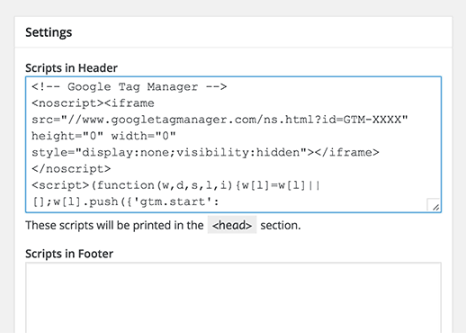The Main Principles Of Google Analytics Event Tracking
Table of Contents7 Simple Techniques For Google Analytics Event TrackingThe smart Trick of Google Analytics Event Tracking That Nobody is DiscussingThe Google Analytics Event Tracking DiariesEverything about Google Analytics Event TrackingAbout Google Analytics Event TrackingThe 4-Minute Rule for Google Analytics Event Tracking

If you're going to set up event tracking by hand, after that you're mosting likely to need to add some added code to the elements you intend to collect information from. The code you're mosting likely to deal with will look something such as this: There are 4 components within that code snippet that you're mosting likely to require to define on your own: event, Category, occasion, Activity, occasion, Label and occasion, Value.
As you can see, two of these are required (category and action) while label and worth are optional. All of it depends upon the kind of details you desire relayed back to Google Analytics when a customer clicks the specified element (Google Analytics Event Tracking). It will certainly be much easier to define these parts if you evaluate your site and make a decision which elements/actions you wish to track
6 Easy Facts About Google Analytics Event Tracking Explained
Currently, you'll be asked to specify the and and you'll desire to select from the drop-down food selection that shows up when you click on. This will raise the same event tracking parts we looked at earlier, which you'll require to fill in. Once you have actually specified these, you can relocate to the second box and select the trigger that will discharge your tag.
On the following screen, you'll additionally have an area for calling your trigger and, if you click on the box, you'll see a checklist of the various triggers you can pick. In this situation, we wish to select and after that select the option listed below. You'll establish the trigger to only fire when an element is clicked with an URL that contains the.
Every site talks. Prior to data analytics, we could not hear the voices of our websites. However how do you understand what your website is saying? Straightforward - Occasion tracking! Event monitoring provides you an image of how users engage with your website and organization (Google Analytics Event Tracking). Do you desire to recognize even more? Then, continue reading as we explore everything you need to know, including what it is, why you should track events, exactly how to take care of occasions data, and other pertinent FAQs you may have.
What Does Google Analytics Event Tracking Mean?
You can change between your occasion classifications, actions, and labels in the Top Events report. The Event Pages report displays the pages where events are triggered.
It shows you the path they take as they move from one event to the following and aids you to establish which web content engages your audience the a lot of. Occasions in Google Analytics have four main elements. click to find out more They are additionally a part of the event monitoring code. Google Analytics makes use of these codes to track individual interactions and group them into occasion records.
A listing of the parameters you can track on your site is on the. After inspecting all necessary fields, you can click "X" to shut the home window and return to the Overview menu on the.
The 5-Second Trick For Google Analytics Event Tracking

Picking "False" will avoid that session from being a bounce. If you haven't done so, you might need to establish a variable in the Google Analytics Settings box. Click "New Variable ..." if you can't locate one to pick. Hereafter, enter your GA tracking webpage ID in the Tracking ID area.
To do this, adhere to the following series of actions: After setting up the fields, select the "Triggering" section. When configuring your new trigger, click the "+" button, after that the "pencil" switch, after that choose your trigger kind.
Google Analytics Event Tracking Can Be Fun For Everyone

When it comes to understanding which sections and components are directing customers through your conversion channel, you still won't understand. So, without event monitoring, GA reports will only count visits as single-page sessions, even if users spend a great deal of time on one page and engage with find it considerably (and a bounce).
Yet how does event monitoring attain this?Single-web page sessions referred to as bounces start and conclude on the very same web page. Without event monitoring, GA will classify a user's visit as a bounce if they do not navigate to one more web page, regardless of exactly how they interact with it. For example, a video-rich page can have a greater bounce rate if occasions are not tracked.
Not known Incorrect Statements About Google Analytics Event Tracking
For GA to take occasion hits into account when determining bounce rates, you must select "Non-interaction occasion" as "False" throughout the GTM arrangement. Setting "occasion objectives" with event activity is an exceptional means to monitor user tasks you value very, such as new lead submissions or click a contact us to activity.